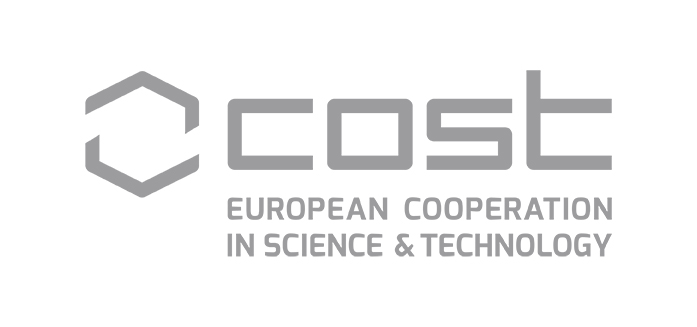Working Groups
WG1: Network and strengthening
Chair: Marc A. Marti Renom
Vice Chair: Ana Pombo
The objective of WG1 will be to build, grow and strengthen the ties between members of the INC action as well as attracting new members after the initiation of this action.
1. Develop and implement an INC action Web site to promote the science and new technologies developed within the INC network.
2. Organize an annual meeting and smaller workshops to disseminate information, discuss the latest findings and showcase and share newly developed technologies.
3. Organize a yearly un-conference meeting reaching out to new disciplines and including stakeholders from countries outside Europe to promote multi-disciplinary perspectives.
4. Create a database for laboratories interested in multiscale 3D/4D genomics and imaging. This database will also be available to the wider genomics community and will be open for inclusion in the database.
5. Identify and promote shared grant applications between members of the consortium. Endorse, promote and facilitate open-access publication for research conducted within the network.
6. Create a distributed 3D Genome European infrastructure by sharing costly and precision instrumentation and equipment
WG2: Challenging the frontiers of experimental resolution
Chair: Pernette Verschure
Vice-chair: Ragnhild Eskeland
The objective of WG2 will be to build, a vivid nuclear organization community in Europe to drive the development of new technologies to study the nucleus.
1. promoting, integrating and refining high-throughput experimental techniques, design adequate instrumentation.
2. coordinating efforts between research teams to adopt different / complementary techniques (imaging and C techniques) or inventing synergistic approaches.
3. study genome dynamics via live-cell, high-resolution ad high-through-put fluorescent or electron microscopy techniques.
4. Develop single cell multi-parameter studies (DNA contacts, RNA output, protein targets etc.) for research and biotech applications.
5. Develop prototypes of artificial, synthetic systems (ex. through 3D printing or new materials) mimicking Nucleome features.
WG3: Developing big data analysis and applying 3D modeling tools
Chair: Daniel Jost
Vice-chair: Angelo Rosa
The objective of WG3 will be to build new tools for quantitation and statistical analysis of both imaging and next generation sequencing data. Indeed, integrating physics-based models with data-driven models are essential to tackle genome organisation on a large scale and on diverse cellular systems.
1. implementing a coordinated repository of computational tools for data analysis.
2. create machine learning and automatic learning methods for big data analysis.
3. coordinating research on relevant physical models of the genome.
4. improving current computational methodologies to include different degrees of resolution and developing new and reliable multi-scale models of how the genome is organized in 3D.
5. using 3D models of the genome as a means to understand and predict genome behavior.
6. designing suitable, open-access web-engines for data-analysis.
WG4: Exploit the Nucleome in health and agriculture
Chair: Argyris Papantonis
Vice-chair: Melita Vidakovic
The objective of WG4 will be to develop technologies and to show that nuclear organisation and dynamics vary with cell type and stage already exists.
1. characterize genome interaction patterns indicative of disease (cancer, neurodegenerative diseases, rare diseases).
2. identify Nucleome organisation features as biomarkers and new targets or diagnostic tools.
3. identify Nucleome organisation features for crop or cattle improvement (production, resistance).
4. identify Nucleome organisation features for genome editing.
5. develop artificial 3D genome systems to test drugs.
6. develop automated imaging or new single cell C protocols to screen compounds.
WG5: Nucleome inspired technology transfer
Chair: İkbal Agah İnce
Vice-chair: Amos Tanay
The WG5 will aim at transferring to health and industry all the discoveries emerging from the INC action.
1. identify exiting patents and potential for protecting intellectual properties (IP)
2. accompany IP holders and those willing to do so, recommend practices
3. encourage contacts to industry, create collaborations with companies
4. establish links with Technology Transfer Offices (TTO) from the participating institutes and countries by discussing the translational potential of IP products from INC activities.
5. include satellite workshops for IP management and forecasting
6. lobby to include specific training in law and IP at universities, fund student exchange
7. identify and outreach to start-up companies for innovation in methods, too and machines that can be directly applied as research results are validated in the clinic or the field.
8. create a database of developed and implemented technologies. The database will be populated by ready-to-use technologies that could be implemented and used in laboratories outside the INC.
9. identify potential for innovation and technological transfer to companies. This task will address the sometimes neglected action of translating technologies into product by identifying potentiality for commercialization.
_____
WHAT IS EPIGENETICS?
A video produced by Eskeland laboratory
COST ACTION
COST (European Cooperation in Science and Technology) is a funding organisation for research and innovation networks. Our Actions help connect research initiatives across Europe and beyond and enable researchers and innovators to grow their ideas in any science and technology field by sharing them with their peers. COST Actions are bottom-up networks with a duration of four years that boost research, innovation and careers.
COST
COST (European Cooperation in Science and Technology) is a funding organisation for research and innovation networks. Our Actions help connect research initiatives across Europe and beyond and enable researchers and innovators to grow their ideas in any science and technology field by sharing them with their peers. COST Actions are bottom-up networks with a duration of four years that boost research, innovation and careers.
https://www.cost.eu/
Action Details
- MoU - 108/18
- CSO Approval date - 13/11/2018
- Start date - 13/05/2019
- End date - 13/11/2023
- Former end date - 12/05/2023



© 2024 INC - All rights reserved